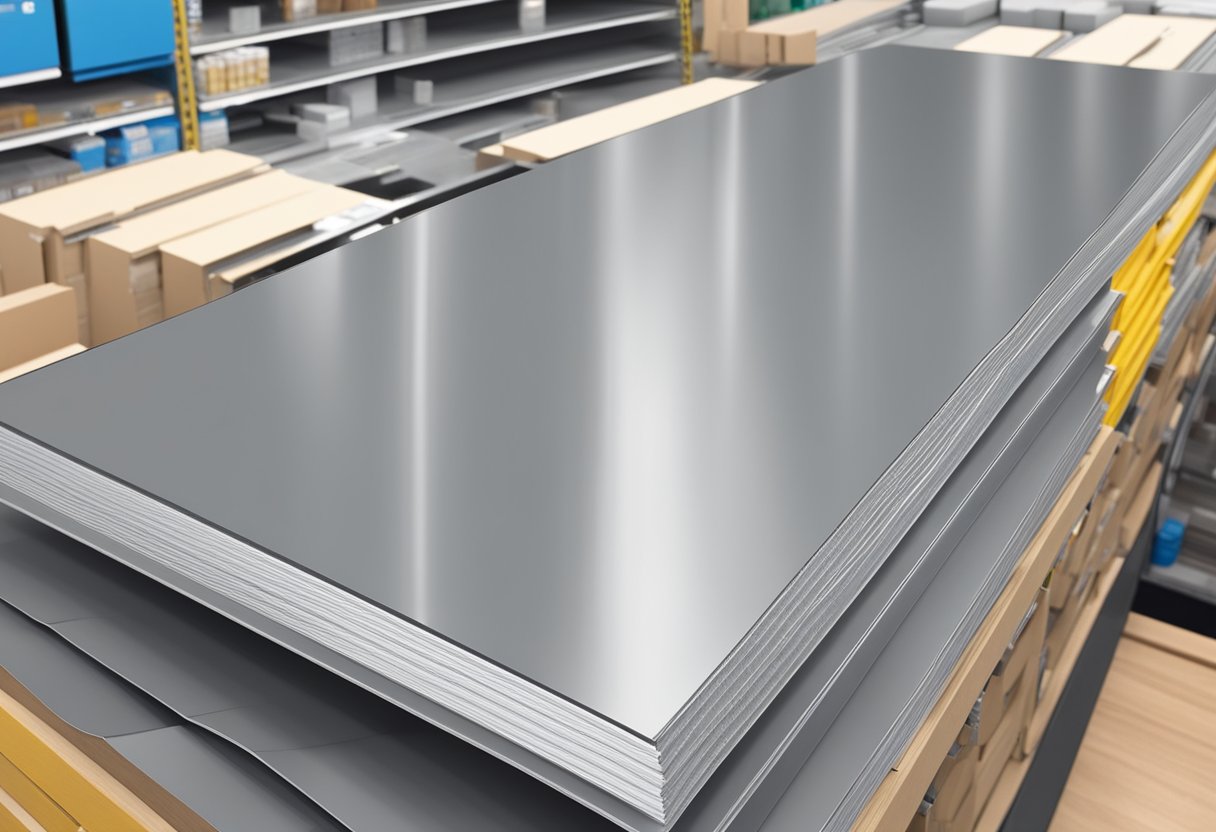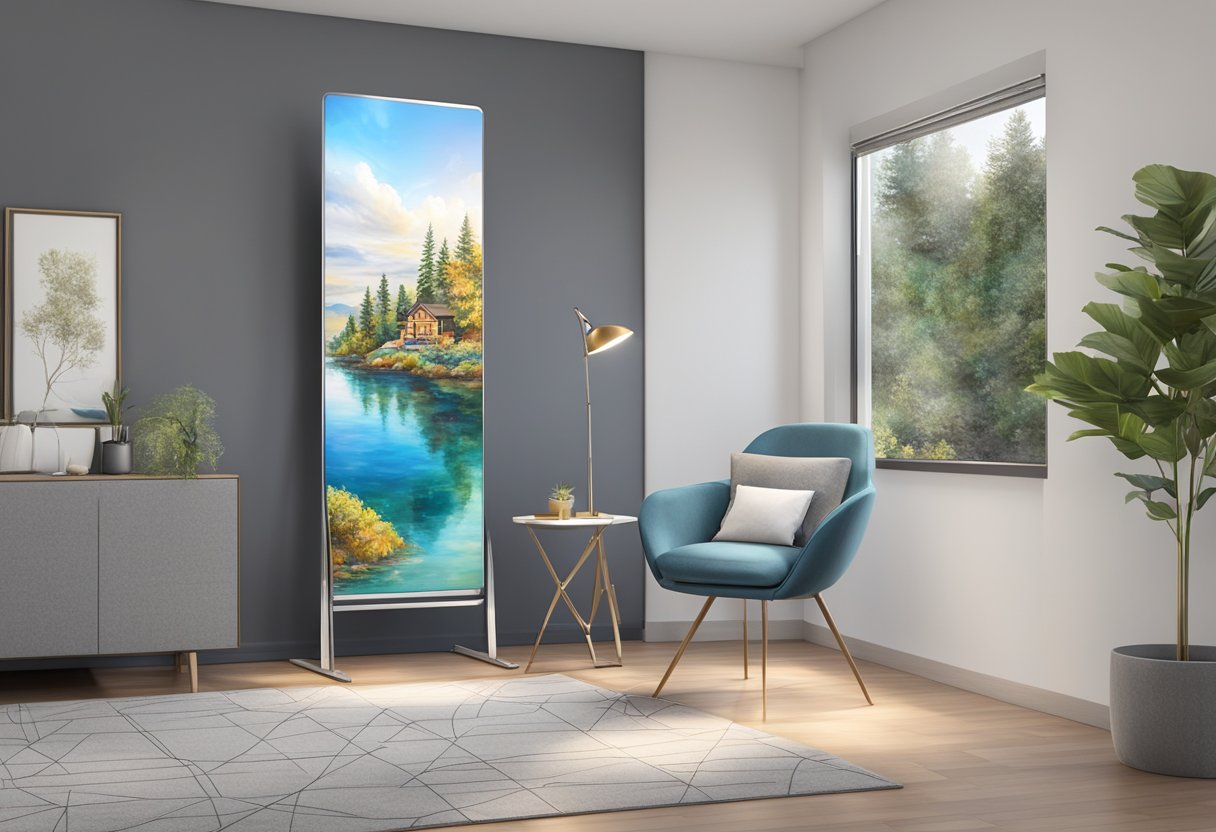Aluminum composite panel (ACP) is a widely used construction material known for its durability, flexibility, and cost-effectiveness. It is made up of two thin aluminum sheets bonded to a non-aluminum core, making it lightweight yet sturdy. Due to its versatility, ACP is used in a variety of applications, including building facades, signage, and interior design.

One of the most important considerations when purchasing ACP is the price. The price of ACP can vary depending on a number of factors, including the size of the panel, the thickness of the aluminum sheets, and the type of core material used. In general, larger panels and thicker aluminum sheets will be more expensive. Additionally, ACP with fire-resistant cores or other specialized features may also come at a higher cost. Overall, the 4×8 size is a popular choice for ACP, and understanding the price range for this size can be helpful when making purchasing decisions.
Overview of Aluminum Composite Panels

Aluminum composite panels (ACPs) are a type of sandwich panel consisting of two aluminum sheets bonded to a non-aluminum core, typically made of polyethylene (PE) or fire-resistant (FR) material. ACPs are widely used in the construction industry due to their lightweight, durability, and versatility.
ACPs come in a variety of sizes, with the standard size being 4×8 feet. The price of ACPs varies depending on the thickness, core material, and finish. The cost of a 4×8 foot ACP panel can range from $40 to $100, with higher-end finishes and thicker panels costing more.
ACPs are commonly used for exterior cladding, facades, and signage. They can also be used for interior wall and ceiling applications. ACPs are available in a range of colors and finishes, including metallic, wood, and stone finishes.
One of the advantages of ACPs is their ease of installation. They can be cut and shaped to fit any design, and can be installed using standard tools. ACPs are also low maintenance, requiring only occasional cleaning with soap and water.
However, it is important to note that ACPs have been associated with fire hazards in some cases. It is crucial to ensure that the ACPs used in construction meet local building codes and fire safety regulations.
Factors Influencing 4×8 Aluminum Composite Panel Prices
Material Costs
The cost of materials is a significant factor when it comes to the price of 4×8 aluminum composite panels. The two primary components of these panels are aluminum and a core material, typically made of polyethylene. The quality and grade of these materials can vary, which affects the price of the panel. High-grade aluminum and premium quality core material will increase the cost of the panel.
Manufacturing Processes
The manufacturing process also plays a role in determining the price of 4×8 aluminum composite panels. Different manufacturing techniques can affect the quality and durability of the panel. Panels that undergo more rigorous manufacturing processes, such as those that are coated with a protective layer or have additional layers of aluminum, may cost more.
Market Trends
Market trends can also affect the price of 4×8 aluminum composite panels. Supply and demand play a significant role in determining the price of these panels. If the demand for these panels is high, the price will increase. Additionally, market trends such as changes in government regulations or shifts in the construction industry can affect the price of these panels.
In summary, the price of 4×8 aluminum panels is influenced by various factors, including the cost of materials, manufacturing processes, and market trends. Understanding these factors can help buyers make informed decisions when purchasing these panels.
Comparative Analysis of 4×8 Aluminum Composite Panel Prices
By Brand
When it comes to comparing the prices of aluminum composite panels (ACP), brand is a significant factor. Some well-known brands of ACPs are Alucobond, Alpolic, Reynobond, and Vitrabond. The prices of these brands vary depending on the quality and the thickness of the panel. Alucobond is the most expensive brand, while Reynobond is relatively cheaper.
By Quality
The quality of the ACPs is another factor that affects the price. The thickness of the panel, the type of core material, and the coating used on the surface all contribute to the quality of the panel. ACPs with a thicker panel and a fire-resistant core material are generally more expensive than those with a thinner panel and a non-fire-resistant core. The quality of the coating used on the surface also affects the price. ACPs with a premium coating are more expensive than those with a standard coating.
By Region
The price of ACPs also varies by region. The cost of manufacturing, transportation, and distribution all contribute to the final price of the product. ACPs manufactured in Asia are generally cheaper than those manufactured in Europe or North America. However, the shipping and handling costs of importing ACPs from Asia can offset the initial cost savings.
In conclusion, when comparing the prices of 4×8 aluminum composite panels, it is essential to consider the brand, quality, and region of the product. By doing so, customers can make an informed decision based on their budget and requirements.
Purchasing Tips for Aluminum Composite Panels
When purchasing aluminum composite panels, there are several factors to consider to ensure you get the best value for your money. Here are some tips to help you make an informed decision:
1. Thickness
The thickness of the aluminum composite panel is an important factor to consider. Thicker panels tend to be more durable and provide better insulation. The most common thicknesses are 3mm, 4mm, and 6mm. However, thicker panels can be more expensive, so it’s important to balance thickness with cost.
2. Coating
The coating on the aluminum composite panel can affect its durability and appearance. PVDF coating is the most common and provides excellent resistance to weathering and fading. However, it can be more expensive than other coatings. PE coating is a cheaper alternative but is less durable and can fade over time.
3. Size
Aluminum composite panels come in a variety of sizes, with 4×8 being the most common. However, larger panels can be more expensive and harder to handle. It’s important to consider the size of the panel in relation to the project requirements and budget.
4. Price
The price of aluminum composite panels varies depending on the thickness, coating, and size. It’s important to compare prices from different suppliers to ensure you get the best deal. However, it’s important to avoid suppliers that offer significantly lower prices, as this can be a sign of poor quality.
By considering these factors, you can make an informed decision when purchasing aluminum composite panels. Remember to balance quality with cost to ensure you get the best value for your money.
Future Outlook on Aluminum Composite Panel Pricing
The aluminum composite panel market is expected to grow at a moderate pace in the coming years. The demand for aluminum composite panels is increasing due to their lightweight, durability, and low maintenance costs. The use of these panels in the construction industry is expected to drive the market growth.
The prices of aluminum composite panels are likely to remain stable in the near future. However, fluctuations in the prices of raw materials such as aluminum and plastic may affect the prices of these panels. The cost of production is also a key factor that affects the prices of aluminum composite panels.
The increasing demand for sustainable and eco-friendly building materials is expected to boost the demand for aluminum composite panels. The use of these panels in green buildings can help reduce energy consumption and carbon emissions. This trend is expected to drive the market growth in the long term.
In conclusion, the future outlook on aluminum composite panel pricing is positive. The demand for these panels is expected to grow due to their numerous benefits and applications in the construction industry. While there may be some fluctuations in the prices due to raw material costs, the overall trend is expected to be stable.



